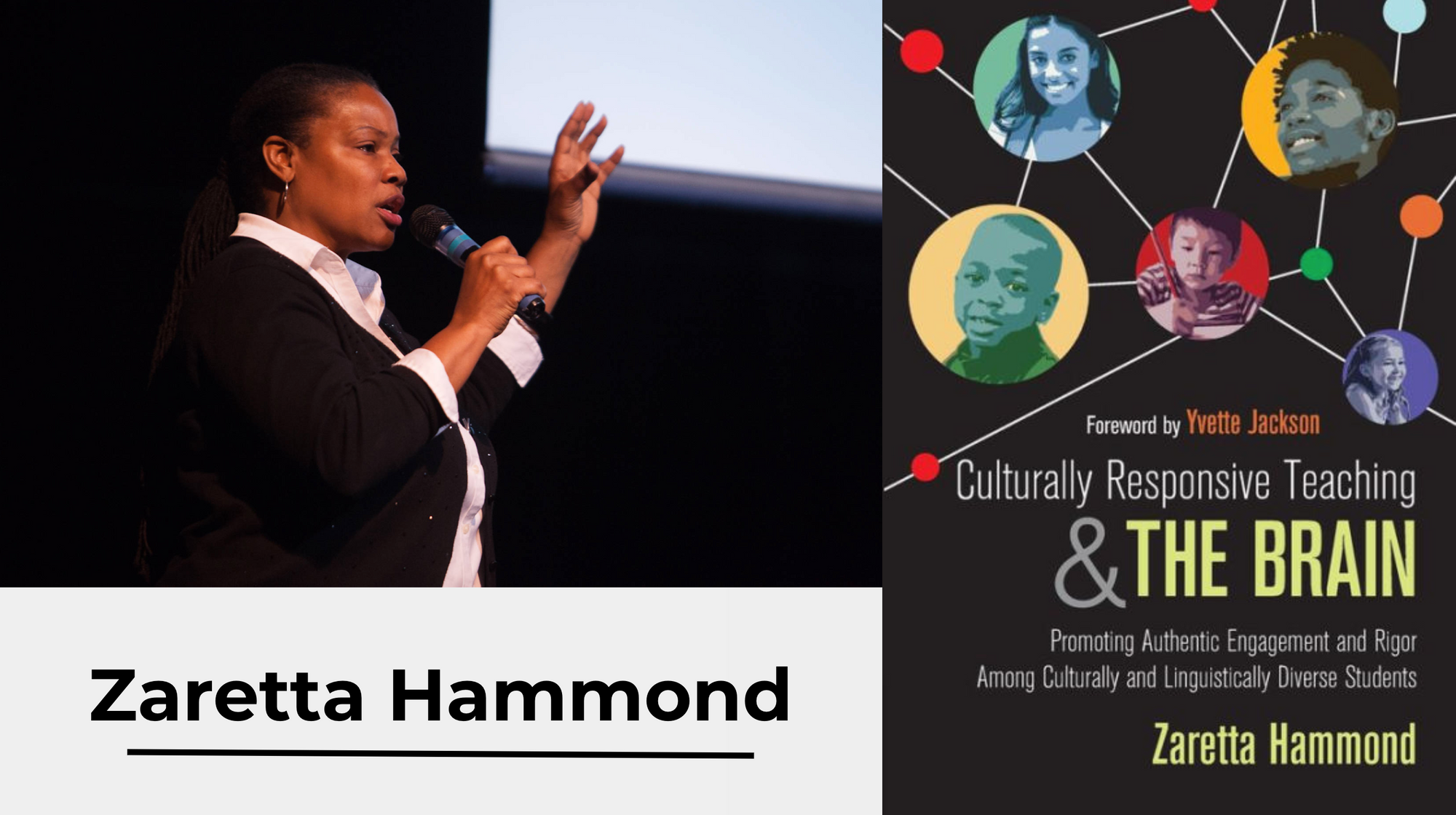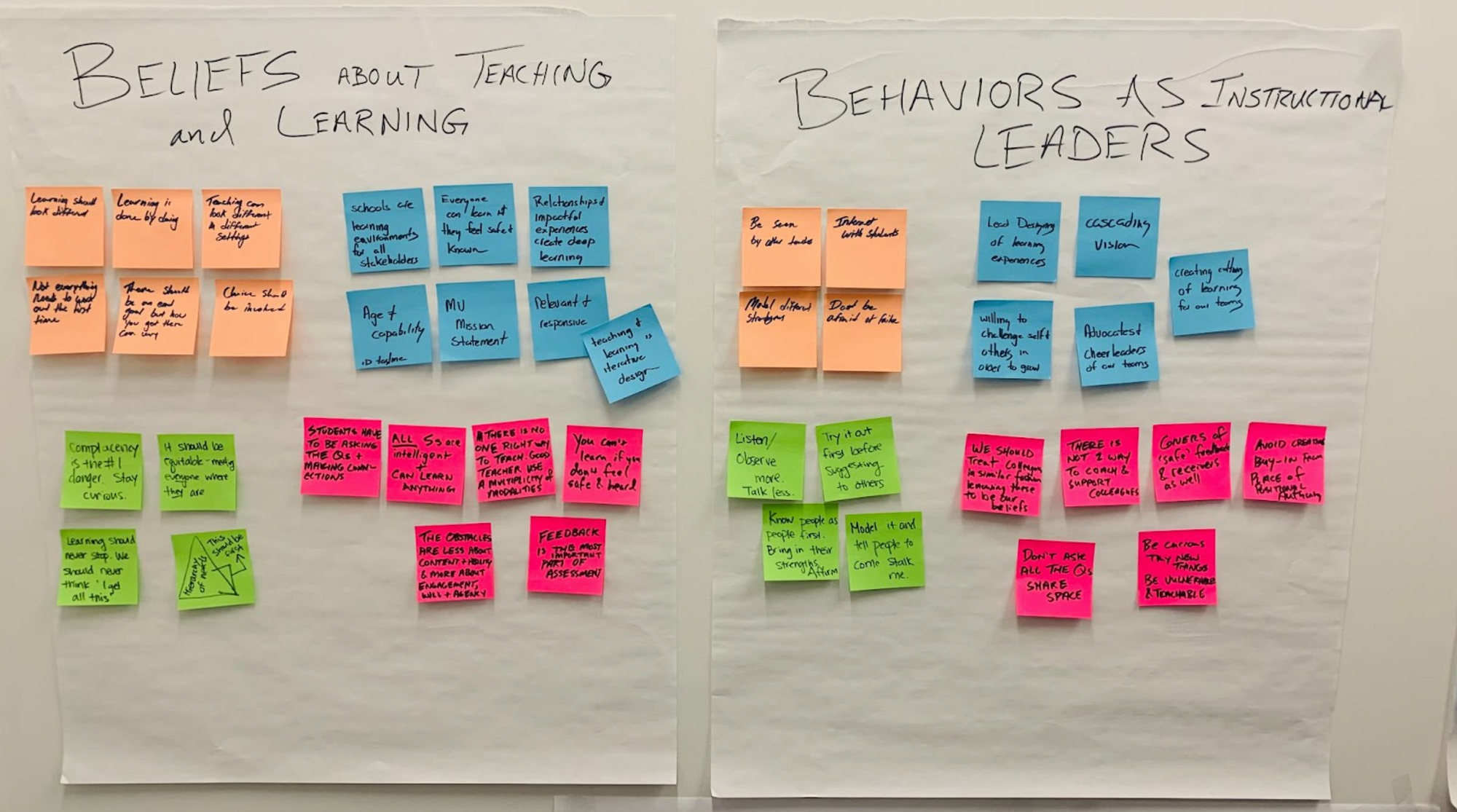It’s afternoon, the end of the school day, and faculty are getting ready for a weekly workshop while students scurry out the building. The session that day focused on un-grading—specifically as it relates to formative assessments for learning. The behavior or practice being discussed was whether or not to grade formative assessments and count them towards a student’s score or final grade in a class. Everyone seemed to be on board with the idea that, like in sports, formative assessments are an opportunity for practice, meaning there’s a reason the scoreboard isn’t turned on at that moment. With lots of heads nodding, it all seems to make sense until one courageous, skeptical participant speaks up: I don’t believe that students will take the work seriously if it’s not for a grade. There’s a reason we’ve never done it this way: It will never work. I can’t motivate a student without grades.
Of course, I had a lot of questions for the vocal participant, but more on that later.
As an Instructional Coach, how should one make sense of the interaction—a moment where it feels like someone just threw cold water on a warm idea that was gaining steam? The temptation in a moment like this is to chalk up the person’s resistance to the fact that they don’t have the right mindset: You need to try to adopt more of a Growth Mindset! Right now, you’re too fixated on why something won’t work and why you can’t do it.
But what is a mindset? Or is that even the right question to ask? Perhaps it’s not a “thing” at all. Perhaps we need to examine not what it is, but how we use the word because the language we employ when discussing growth, coaching others, and evaluating behaviors is so important.
Instructional Coaches often speak about a “Fixed Mindset” versus a “Growth Mindset”—the difference between those who believe certain behaviors can lead to improved performance, capacity, and intellect and those who do not. The intent when talking mindsets is good: we’re basically trying to encourage someone, to tell them you can do this; your actions can motivate kids through other means! You can improve your practice in this way! But I worry about the impact sometimes. I wonder if labeling it so simply (namely this mindset versus that mindset) might mask the challenging realities we face when serving on collective teams that are focused on improvement.
It’s important for me to say that my wonder is less about Carol Dweck’s thoroughly researched concept[1] and more about how we use the term too simplistically to explain away our difficulties in coaching someone towards growth and improved practice. I worry that our language limits our view to seeing only internal causes and explanations (more on this later).
Coaching colleagues is a complex and challenging endeavor, but one way to make it feel like a simpler scenario is to label the person or the challenge: You’re either fixed or growth-oriented. But binary labels cannot capture complexity, meaning we risk effacing an individual’s sense of agency, identity, and dignity when we characterize “a person’s performance (or behavior) to be internal (caused by the person) and to be stable (consistent across situations)” — which is also an accurate description of what social psychologists call “attribution bias.”[2] It is our tendency to blame the person (internal attribution) instead of investigating any external conditions that might reveal a person’s performance or behavior not to be consistent across situations (meaning the attribution is not stable). We do this on our commutes to work when someone cuts us off and we conclude, Well that person is a jerk! Stop and ask: Could there be other factors? Was the driver rushing their child to the emergency room, for instance? In other words, perhaps there is something specific to the context that caused the behavior (Mark D. Cannon and Robert Witherspoon, 2005).
In other words, it’s unhelpful (I think) to attribute these labels to the whole person: Again, what about the situational context or external factors at play? Can one have a fixed mindset in one environment, but behave differently in a situation where certain conditions have changed? Could there be a scenario where some external factor prevents me from believing my actions will have an impact? What about predicaments where one doesn’t think they have the option to act in ways they believe will have an impact on growth and improvement?
I suggest we interrogate this further by looking through the lens of the Three Levels of Culture:[3]
- Deep Culture (Roots) = Our Beliefs
- Shallow Culture (Trunk) = Our Dispositions, Ways of thinking, Norms
- Surface Culture (the Foliage/Leaves/Flowers | What’s really visible) = Our observable behaviors

Following this model, our mindset—whether fixed or growth-oriented—is something (according to how we use the word) that lives and evolves in the shallow region of our cultural self—just below the surface. Technically, it’s not completely observable. With this framework in mind, consider the concept of self-efficacy, which according to Albert Bandura “refers to BELIEFS in one’s capabilities to organize and execute the courses of action (i.e. BEHAVIORS) required to produce given attainments” (18).[4] Also, think about the definition of collective teacher efficacy: “the collective self-perception (BELIEF) that teachers in a given school make an educational difference (their BEHAVIOR has impact) to their students over and above the educational impact of their homes and communities” (14).[5] Something to keep in mind for later: disagreements about deeper cultural beliefs have a high emotional impact on those who disagree on such matters, whereas differences in surface behavior have a much lower emotional impact. It’s easier to discuss disagreements over grading policy than debating differences of deep belief about the purpose of education, for instance, which also means it’s safer to encourage someone to try changing a certain behavior than attempting to challenge that person’s beliefs.
Thinking about all this, what’s going on when a colleague seems to exhibit a “fixed mindset” in a moment when the community is pushing for collective, efficacious transformation in practice? Take changing how we grade so students learn more deeply, for example. In the scenario at the faculty workshop, perhaps that person lacks a sense of self-efficacy. Perhaps there’s a disconnect between deep belief and surface behavior (whether that behavior is a natural occurrence or coerced)? Perhaps we’re looking at the wrong level of culture (in this case mindsets, i.e. shallow culture) when trying to locate the thing that’s obstructing transformative opportunities from happening. Perhaps the language game of mindsets is misleading in that it simplifies something that’s harder to name with clean labels—namely our fluid, ever-evolving ways of being which are always context-specific.
My provocation: We cannot physically observe mindsets, yet that’s how simple labels (like “fixed” or “agile”) function: labels proclaim to see that which cannot be seen in its full complexity - namely, the mind of another (or an Other).
Instead, we should observe and take in, without judgment, a person’s behavior and stated claims (surface culture), and in the spirit of curiosity, seek understanding about that person’s beliefs. Instead of trying to FIX a person’s mindset or before correcting certain behavior, how might we uncover the disconnect between a person’s professed or withheld Beliefs (deep culture) and the collectively desired Behaviors of the team (surface culture)? Is there a misalignment of belief between the person and the team? Is there a misunderstanding in terms of which behaviors match and reinforce one’s professed beliefs? Are a person’s behaviors and professed beliefs merely performative because they feel there’s no other option than faithless compliance?

In terms of a disconnect between belief and behavior, we’re really dealing with the problem of self-efficacy – something that can only be realized when our behaviors are truly reinforcing and in exponential cooperation with our beliefs (and vice versa).
“The key,” writes Zaretta Hammond, “lies in focusing on deep culture. Rather than focus on the visible ‘fruits’ of culture… we have to focus on the roots of culture: worldview, core beliefs, and group values” (24-25). But how are we going to honor that process of uncovering a person’s deep beliefs? Because it’s not a matter of identifying a person’s beliefs to point out that they’re wrong (that would have a high emotional impact; besides, it’s no one’s business to change another’s beliefs. That journey is personal); instead, it’s a matter of responsive coaching that seeks to understand the disconnect between a person’s beliefs and an institution’s or team’s agreed-upon behaviors and action steps. What are ways to build bridges between beliefs and behavior that honors everyone’s identity and ways of making sense of the world?
If we’re looking for shallow explanations for the challenges we face as Instructional Coaches then stick to the language of mindsets-as-labels (which was not Dweck’s original intent). However, if we want to inspire deep transformation through the work we do with others then let’s find ways to bridge gaps between beliefs and behaviors such that everyone genuinely feels a deep sense of self-efficacy and belonging. That means we’re not in the business of changing someone’s culturally situated beliefs; instead, we’re in the business of finding common understanding and mutually identified connections to bridge gaps that establish collective efficacy.
To illustrate, let’s return to our opening example. A team, department, or PLC has made the behavioral commitment not to grade formative assessments: Only summative performances will count towards one’s academic score (we’re talking about surface culture behavior). However, a skeptical teammate pushes back because they don’t believe that students will take the work seriously if it’s not being scored with a recordable number/letter grade. The much-needed skeptic in the room doesn’t believe in the efficacy of the team’s agreed-upon practice (a matter of deeper beliefs).
Why the resistance? Perhaps, in prior experiences, that person succeeded in an educational environment that puts all the emphasis on grades? Perhaps that contributed to a personal feeling of significance and success in one’s previous cultural experience (a feeling they wish for their students as well)? Perhaps there are other factors in place that contribute to their skepticism, such as an administration that is predictably unsupportive when students do go off the rails and stop submitting evidence of their formative learning experiences.
Instead of debating the validity of one’s belief versus another’s (which could produce a high emotional impact), I suggest we learn more about that person’s beliefs; try to discover what shared beliefs you have in common. Perhaps both of you believe that learning only improves when students feel free to practice something multiple times—that failing forward is a productive and necessary part of everyone’s life experience (a shared deep belief). Perhaps in partnership, this is the bridge that needs to be built to connect a person’s beliefs to the behaviors a team has agreed upon as a collective commitment. Now, we’ve established grounds for cultivating self-efficacy: Based on our shared belief about failing forward, let’s explore this practice of not grading formatives. Let’s ground our reasons for trying this on the foundation of this shared belief and see how it goes?[6] And now, we’re on the path to leveraging the most powerful influencer for maximizing student learning—namely collective teacher efficacy (in this case, as it relates to how we collectively grade and assess student work).[7]
With this approach, everyone’s beliefs remain respected, and the bridges between belief and behavior are built to honor the fact that there are a variety of routes for forging these connections between depth and surface. Will the skeptical teacher be fully convinced of the efficacy of ungrading formative assessments? Probably not completely; but hopefully they’re a little more open to testing a new practice (a demand that has a much lower emotional impact) in a way that’s grounded in something they already believe and value (which avoids harmful high emotional impact).

As my mentor, Bo Adams, once stated: “Sometimes, in order to change one’s beliefs, we first have to change our behavior.” Maybe the team’s collective impact on improving student learning actually will transform that person’s belief about what motivates students to get the work done. But that’s neither here nor there because, as stated earlier, it’s nobody’s business to do so. It is our business, however, to be curious about each other, to seek understanding, to be vigilantly attuned to how we personalize the bridge-building between beliefs and behavior, and to do so for purposes of impacting student learning.
To sum it up, how might we bridge the gap or help discover the connection between belief and behavior for those we support, coach, and work with, such that self-efficacy (and ideally collective efficacy) can become an actualized practice that maximizes impact? It starts with establishing trust by genuinely seeking understanding in culturally responsive and identity-responsive ways. As Peter Dewitt suggests in Collective Leader Efficacy, “instead of seeing a colleague as resistant, try to understand that your colleague may lack self-efficacy in that area” (41). Let’s personalize our conversations around growth, not by relying on binary constructs (like fixed vs. growth mindsets), but by seeking understanding about why someone might feel a lack of efficacy when it comes to a specific area of improvement or practice.
As a final side note, I think what Dweck means by a Growth Mindset is simply someone who is experiencing high levels of self-efficacy. With that said, I hope the final takeaway from this reflection is that there is more to interrogate: There are always external factors preventing efficacy in the workplace, as well as sociopolitical realities that, if not considered carefully, risk missing opportunities to spark growth due to our own blinders caused by attribution bias. The good news is we have influence over external factors and systems, but we have to be aware of them, which means moving away from the language of labels and the trappings of attribution bias.
Labels beget biases, whereas looking at each person as uniquely complex with deep cultural roots forces us to do the harder work. It forces us to ask deeper questions about our roles as instructional coaches.
Dweck, Carol S. Mindset: The New Psychology of Success. Random House, 2006. I actually think that what I have to say here aligns well with Dweck’s work as we’ll see once we’ve unpacked the concept a little more. ↩︎
Attribution bias is our tendency to attribute poor performance to the internal nature or qualities of a person instead of investigating the external conditions or possible causes, which could reveal a person’s poor performance not to be consistent across situations, therefore suggesting that external factors could be at least part of the cause. See Cannon, Mark D. and Witherspoon, Robert. “Actionable Feedback: Unlocking the Power of Learning and Performance Improvement.” The Academy of Management Executive (1993-2005). Vol. 19, No. 2 (May, 2005), 120-134. ↩︎
See Hammond, Zaretta. Culturally Responsive Teaching & the Brain: Promoting Authentic Engagement and Rigor Among Culturally and Linguistically Diverse Students. Corwin Press, 2015, 21-28. Hammond offers the metaphorical imagery of a tree with its three levels: the roots (conscious & unconscious beliefs of deep culture), the trunk (unspoken rules, mindsets, and dispositions of shallow culture), and the leaves (observable patterns and behaviors of surface culture). ↩︎
Citation taken from Peter M Dewitt’s Collective Leader Efficacy: Strengthening Instructional Leadership Teams, Corwin Press, 2022. The original quote is from Albert Bandura’s Self-Efficacy: The Exercise of Control (1997). ↩︎
Citation taken from Peter M Dewitt’s Collective Leader Efficacy: Strengthening Instructional Leadership Teams, Corwin Press, 2022. The original quote is from M. Tschannen-Moran and M. Barr’s “Fostering student learning: The relationship of collective teacher efficacy and student achievement.” Leadership and Policy in Schools, 3(3), 189-209 (2004). ↩︎
There are cases where a necessary policy, or the well-being of a student, or some other factor may lead to a situation where it’s a “bridge too far to build” – where beliefs are too divergent in some cases – so please know I suggest this approach with that obvious caveat in mind. ↩︎
This is not to say that students depend on these conditions for learning to happen, but collective efficacy nourishes natural processes of learning and creates conditions for it to thrive. ↩︎
Comments